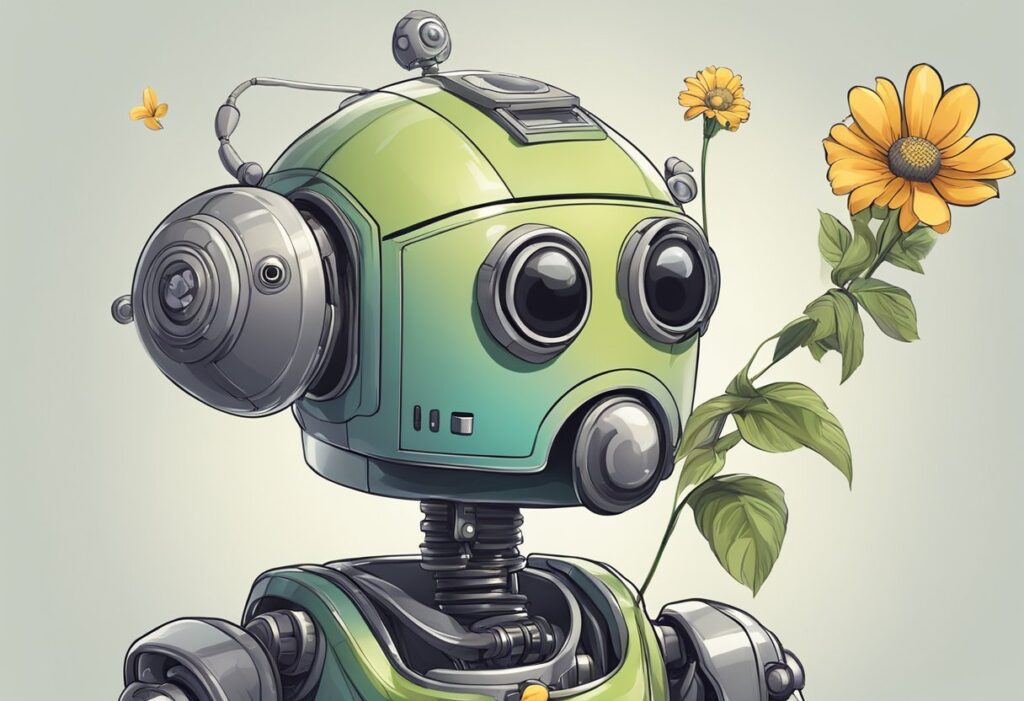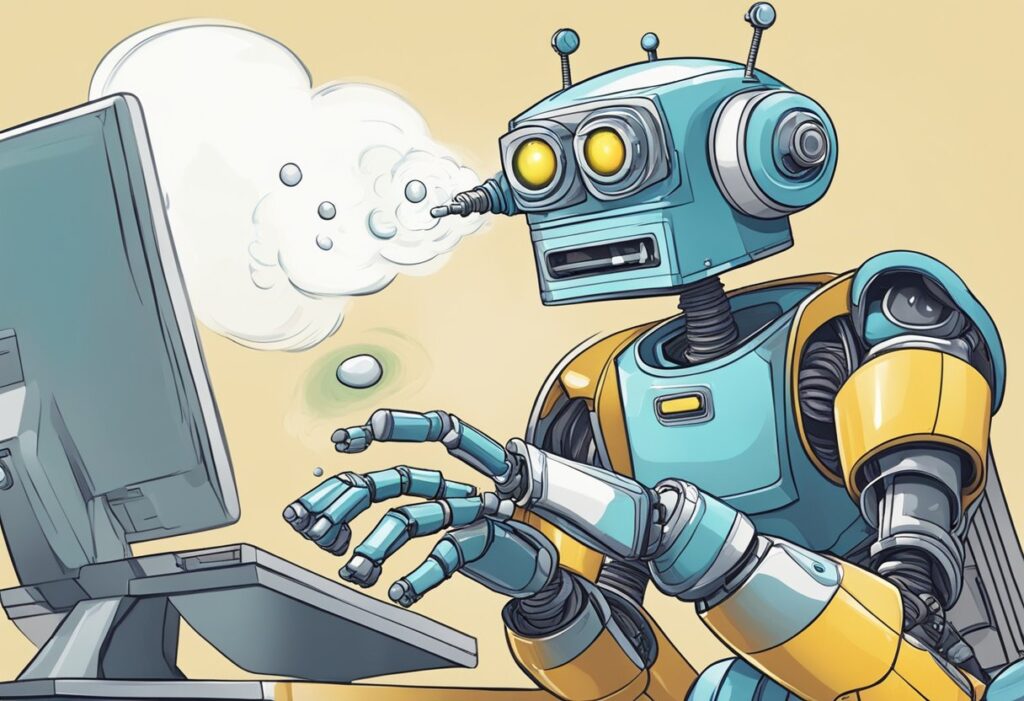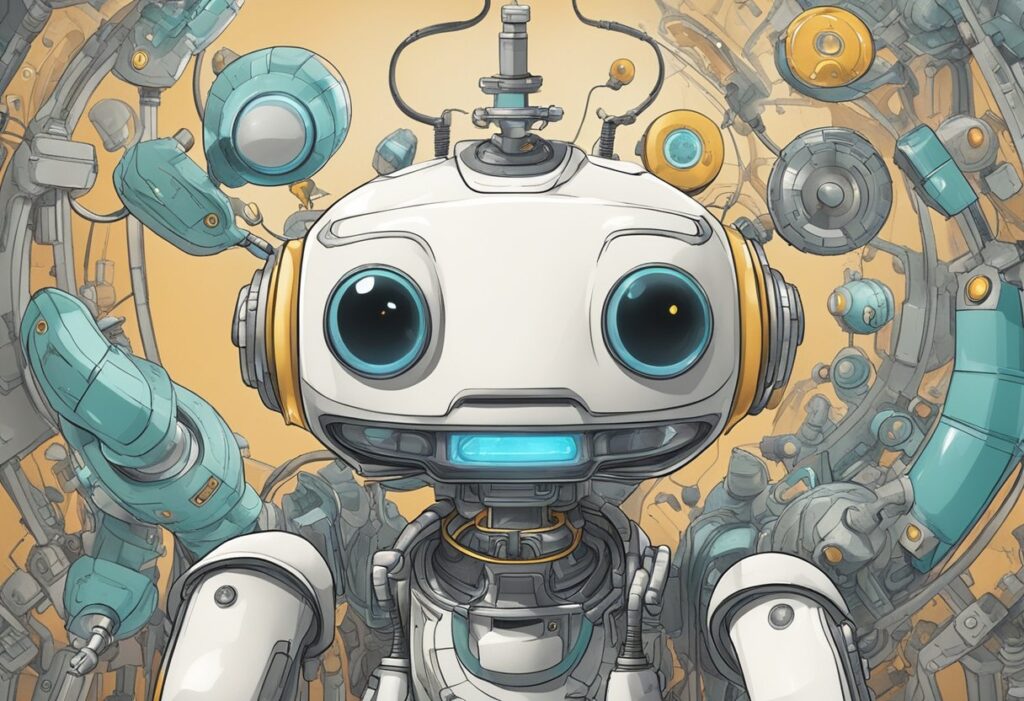Advancements in Artificial Olfaction: Bridging the Gap Between Robots and Scent Perception
Introduction: The Sweet Smell of Success

Imagine a world where robots don’t just vacuum your floors but can also tell if your milk has gone bad. Welcome to the realm of biomimetic olfactory chips! These tiny tech marvels are paving the way for robots to develop a sense of smell, adding a whole new dimension to the phrase artificial intelligence. From detecting gas leaks to enhancing food safety, the ability for robots to smell is no longer a pipe dream but a rapidly approaching reality. Buckle up and hold your nose; we’re diving into the sweet-smelling world of robotic olfaction.
The Quest for Artificial Noses: Why Robots Need to Smell
Ever wondered why your Roomba can’t warn you about that forgotten sandwich behind the couch? The quest for artificial noses isn’t just about mimicking human abilities for the sake of it. Smelling capabilities could revolutionize how robots interact with their environment. Detecting hazardous materials, identifying spoilage, and even offering personalized scent experiences are just a few ways this tech could transform industries. Robots equipped with olfactory sensors could navigate environments more safely and efficiently, making our lives easier and, let’s be honest, a bit more futuristic.
From Sci-Fi to Reality: The Evolution of Olfactory Technology
We’ve come a long way from the early days of sci-fi fantasies. The idea of robots with a sense of smell has been a staple in futuristic narratives, from Star Trek to Blade Runner. However, turning this fiction into fact has been no small feat. Early attempts at electronic noses were bulky and unreliable, often more akin to a college science project gone wrong. But thanks to advancements in nanotechnology and artificial intelligence, we now have sleek, efficient, and highly sensitive olfactory chips. These devices can detect and differentiate a myriad of scents, bringing us ever closer to the sci-fi future we’ve dreamed of.
Biomimetic Olfactory Chips: What Are They and How Do They Work?
Biomimetic olfactory chips, inspired by the biological processes of the human nose, are engineered to mimic how we detect and identify smells. These chips are embedded with a variety of sensors coated with chemical compounds that react to specific molecules. When these molecules bind to the sensors, they create a unique electronic signature, which is then interpreted by AI algorithms to identify the scent. Think of it as a sophisticated game of “scratch and sniff,” but instead of your fingers, it’s a microchip doing the heavy lifting.
Smell Ya Later: How AI Enhances Olfactory Recognition

AI plays a crucial role in making robotic noses not just functional, but incredibly precise. Machine learning algorithms analyze the data from olfactory chips to recognize patterns and improve detection accuracy over time. This means that, much like a wine connoisseur honing their palate, these robotic noses get better with age. AI can also filter out background odors, ensuring that the robot focuses on the most relevant scents. So next time your robot chef gets the seasoning just right, you can thank the wonders of artificial intelligence.
Robotic Noses in Action: Practical Applications
Sniffing Out Danger: Robots in Hazardous Environments
In dangerous environments, having a keen sense of smell can be a lifesaver—literally. Robots equipped with olfactory chips can detect:
- Gas leaks
- Chemical spills
- Explosives
These mechanical bloodhounds can venture into areas too risky for humans, providing real-time data and alerts that can prevent disasters. Picture a brave little robot, nose to the ground, sniffing out danger and keeping us safe from harm.
Aromatic Assistants: Robots in Healthcare and Elderly Care
The healthcare sector stands to benefit immensely from robotic noses. These olfactory-enhanced helpers can:
- Monitor air quality in hospitals
- Detect infections through breath analysis
- Provide comfort by ensuring environments are free from unpleasant odors
For older adults, robots with a sense of smell can:
- Check for spoiled food
- Identify smoke or gas leaks
- Ensure a safer living environment
It’s like having a vigilant, non-judgmental caregiver with a superhuman sense of smell.
Culinary Companions: Robots in Food and Beverage Industry
Imagine a robot in your kitchen that can tell you if your avocados are ripe or if the steak in your fridge has turned. In the food and beverage industry, olfactory-capable robots can:
- Ensure food safety by detecting spoilage and contamination
- Assist chefs by fine-tuning flavors and aromas in culinary creations
With these culinary companions, your next meal could be not just delicious but perfectly safe and precisely seasoned.
Challenges and Limitations: When the Nose Knows Too Much

There are, however, some obstacles to be taken. The complexity of human olfaction can never be fully matched. Environmental influences, such as humidity or temperature, can interfere with the recognition of smells. In addition, these advanced systems can sometimes be prohibitively expensive to develop and deploy.
Sensory overload is another fear that some scientists have even reported—just imagine how a busy kitchen or a busy ward in a hospital could be filled with a myriad of smells that would drive a robot mad. Really, it is these limitations that we need to work through in time to shape fine-tuned solutions.
The Future of Robotic Smell: What’s on the Horizon?
The future of smell in robotics is as exciting as it is fragrant. People are working on how to put olfactory chips onto an even greater range of robots, from personal assistants to industrial machines. And as AI evolves, so too, we hope, will scent detection and discrimination by these robotic noses. Now maybe we can have a robot capable of:
- Diagnose diseases from breath samples
- Detect environmental changes with unprecedented accuracy
The possibilities are as great as the range of scents in the world.
Nosey Neighbors: Ethical and Privacy Concerns
Just like any other tech advancement, the emergence of robotic olfaction brings up ethical considerations. One of the greatest concerns is that of privacy: Should robots be provoked by personal odors? Could this lead to an encroachment on privacy or the misuse of data? To assume such technologies will work for the benefit of humankind is to establish a self-evident code and regulations to ensure protection of personal privacy while benefitting from the potential of these robotic noses.
Conclusion: A Fragrant Future for Robotics and AI
A Fragrant Tomorrow Resembling Robotics and AI That is such an essential step for the robot in the future and the presence of artificial intelligence. These chips enable a sense of smell, thus making it possible for robots to assure individuals of convenience, safety, and health. That would be a hard thing to do, but the promising benefits are far greater than the obstacles. As such, we can potentially foresee a future wherein the presence of robot smell sense becomes a necessity in our lives, improving the environment and protecting our well-being. So here’s to a fragrant future, filled with the sweet smell of success.
Resources and Case Studies:
Resources
Official Publications and Reports
- National Institute of Standards and Technology (NIST)
- Description: Comprehensive reports and publications on advancements in biomimetic sensors and AI technology.
- Link: NIST Publications
- IEEE Xplore Digital Library
- Description: Extensive collection of research papers and articles on biomimetic olfactory chips and AI in robotics.
- Link: IEEE Xplore
Books
- “Artificial Intelligence: A Guide for Thinking Humans” by Melanie Mitchell
- Description: An accessible overview of AI technologies and their applications, including advancements in robotic olfaction.
- Link: Amazon Link
- “Introduction to AI Robotics” by Robin Murphy
- Description: A detailed introduction to AI and robotics, including sensor technology and machine learning applications.
- Link: Amazon Link
Online Courses and Lectures
- Coursera: Robotics Specialization
- Description: A series of courses covering the fundamentals of robotics, including sensor integration and AI applications.
- Link: Coursera Robotics
- edX: Artificial Intelligence for Robotics
- Description: A course focusing on the application of AI techniques in robotics, including sensor technology and perception.
- Link: edX AI for Robotics
Research Papers and Articles
- “Biomimetic Olfactory Sensors: Current Status and Future Perspectives” by T. H. Lee et al.
- Description: A comprehensive review of the current state and future prospects of biomimetic olfactory sensors.
- Link: Research Paper
- “Artificial Olfaction in Robotics: Current Status and Future Trends” by W. W. Burgard et al.
- Description: An in-depth analysis of artificial olfaction systems in robotics and their potential applications.
- Link: Research Paper
Databases and Tools
- OpenAI GPT-3 API
- Description: An AI model that can be used to process and analyze data from olfactory sensors.
- Link: OpenAI GPT-3
- TensorFlow
- Description: An open-source machine learning framework that can be used to develop AI models for olfactory data analysis.
- Link: TensorFlow
Conferences and Workshops
- IEEE International Conference on Robotics and Automation (ICRA)
- Description: A leading conference on robotics and automation, featuring sessions on sensor technology and AI.
- Link: ICRA Conference
- International Conference on Artificial Intelligence and Robotics (ICAIR)
- Description: A conference dedicated to AI and robotics, with a focus on the latest research and developments.
- Link: ICAIR Conference
Case Studies
Google’s AI-Powered Olfactory Sensors
- Overview: Google has developed AI-powered olfactory sensors capable of detecting a wide range of odors with high accuracy.
- Impact: These sensors are being tested in various applications, from enhancing food safety to detecting hazardous materials.
- Further Reading: Google AI Blog
IBM’s Healthcare Robots
- Overview: IBM has integrated biomimetic olfactory chips into healthcare robots to monitor air quality and detect infections.
- Impact: These robots improve patient care by providing real-time data on environmental conditions and potential health risks.
- Further Reading: IBM Research Blog
Siemens’ Industrial Safety Robots
- Overview: Siemens has deployed robots with olfactory sensors in industrial settings to detect gas leaks and chemical spills.
- Impact: These robots enhance workplace safety by identifying hazards that might otherwise go unnoticed.
- Further Reading: Siemens Innovation Blog
Samsung’s Smart Home Devices
- Overview: Samsung has integrated olfactory sensors into its smart home devices to monitor air quality and detect odors.
- Impact: These devices help maintain a healthy living environment by alerting users to potential issues like gas leaks or spoiled food.
- Further Reading: Samsung Newsroom
Toyota’s Automotive Innovations
- Overview: Toyota has incorporated olfactory sensors into its vehicles to detect alcohol levels and improve driver safety.
- Impact: This technology can prevent drunk driving by alerting the driver or disabling the vehicle if high alcohol levels are detected.
- Further Reading: Toyota Newsroom
These resources and case studies provide a comprehensive overview of how biomimetic olfactory chips and AI are advancing and their practical applications across various industries. They illustrate the transformative potential of this technology and guide further exploration into this pioneering field.